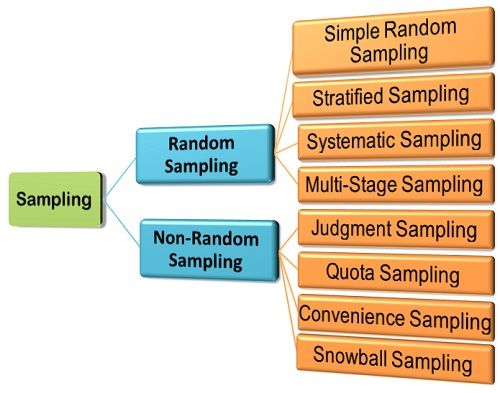Definition: The Sampling is a statistical process of selecting few representatives from the population, called as a sample, on the basis of which the characteristics of the total population can be ascertained.
Since the sample selected should reflect the true characteristics of the population the researcher must decide which sampling method should be used. The sampling methods can be classified as:
- Random Sampling Methods: The random sampling is also called as a probability sampling since the sample selection is done randomly so the laws of probability can be applied. Following are the important methods of Random Sampling:
- Non-Random Sampling Methods. In the case of non-random sampling, the selection is done on the basis other than the probability considerations, such as judgment, convenience, etc. The non-random sampling is subject to sampling variability, but however there is no certain pattern of variability in the process.What is Sampling Variability? Since the results are obtained from the sample rather than the population, there is a possibility of variations in the published estimates and the actual. This variation is called as Sampling Variability. The methods of non-random sampling are given below:
Thus, the researcher can apply either of the sampling methods depending on the size of the population and the objective of the research.


Leave a Reply